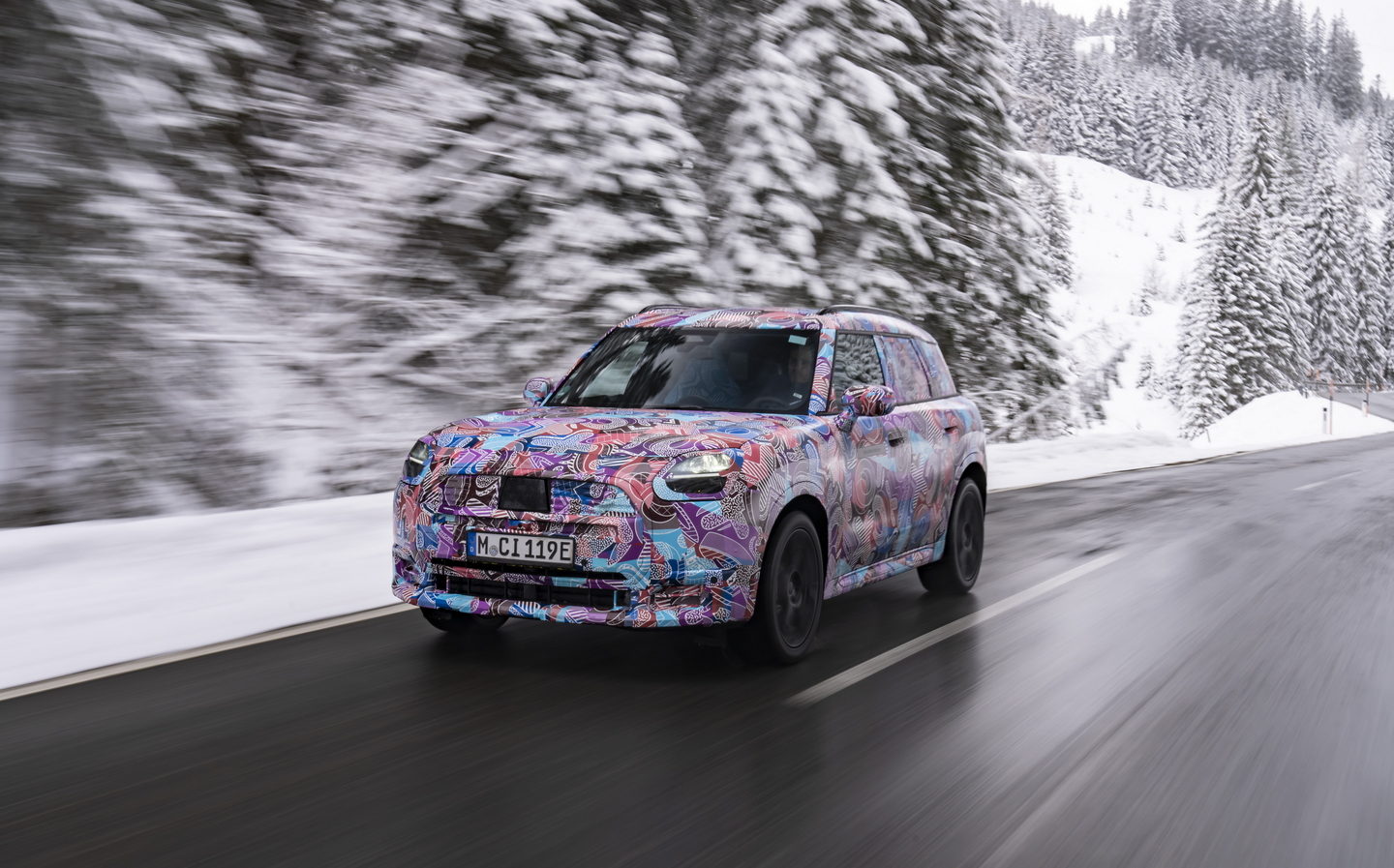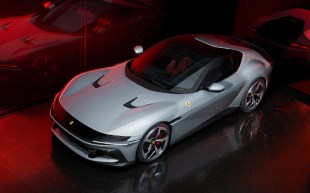Larger, pure-electric Mini Countryman breaks cover as brand makes way for smaller crossover EV
New electric Mini hatchback also slated for 2024
Mini has confirmed that the new third-generation Countryman will be available with a choice of pure-electric or petrol power when it goes on sale in 2024, and that it will grow in size to make way for a new, more compact crossover.
The new Mini Countryman E — as it is being referred to by its maker — has been teased in camouflage to mask its final form ahead of a full reveal later this year.
It will feature either one or two electric motors, in front- or all-wheel drive configurations.
The entry-level Countryman E will use a front-mounted motor rated at 188bhp, which is just a little more powerful than the current Mini Electric hatchback.
The AWD model’s rear motor brings peak power up to an impressive 308bhp, comprehensively outgunning the departing plug-in hybrid Countryman Cooper S E All4.
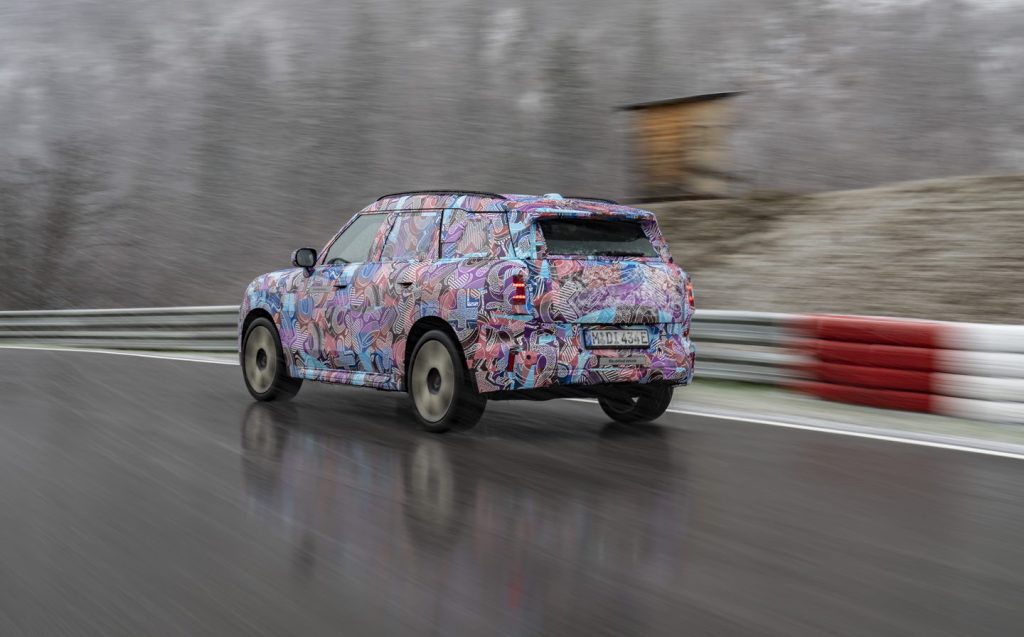
The electric powertrain is shared with the BMW iX1 xDrive30. In that vehicle, peak torque is quoted as 364lb ft and the 0-62mph time is just 5.7 seconds.
Mini quotes a range of up to 280 miles from a battery pack with a capacity of 64.7kWh, presumably for the more efficient front-drive model. In the all-wheel-drive iX1, the same battery allows for a range of up to 272 miles.
Mini has confirmed to Driving.co.uk that, as previously reported, the petrol plug-in hybrid version of the Countryman is being discontinued and there will not be a diesel model, but a petrol variant is planned alongside the electric model.
Bigger than before, but a smaller (carbon) footprint
Using the underpinnings of the BMW X1, the new Countryman is 130 millimetres longer than before, at 4,429mm, while it’s also nearly 60mm taller at 1,613mm.
Interestingly, the first-generation Countryman was the first ever Mini to exceed four metres in length. The increase in dimensions should further improve on the Countryman’s interior space and the electric powertrain should enhance the packaging, too. Mini has also alluded to a “variable-use” interior, so it’s expected that the rear seats will slide, tilt and fold away easily as required.
By increasing the size of the Countryman, Mini has created space in the line-up for another car to sit between it and the forthcoming new Mini hatchback (more on which below).
The BMW-owned British brand has already confirmed that an all-new electric crossover will occupy this space. This vehicle is likely to take its design cues from the well-received Aceman concept car and is expected to be revealed in 2024.
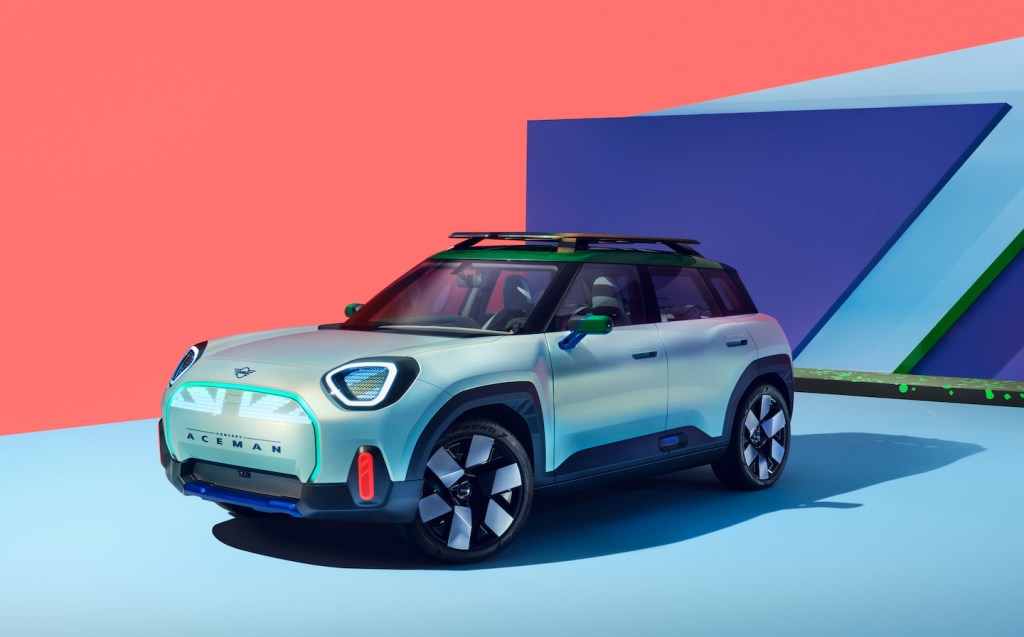
Although the Countryman is larger than before, Mini hopes to reduce its whole life carbon footprint by employing a large portion of recycled materials and manufacturing the car in a sustainable manner.
To that end, the dashboard, steering wheel, headliner, floor and floor mats all feature recycled polyester obtained from PET bottles and carpet remnants. Mini claims that this “reduces CO2 emissions along the value chain by up to 85 per cent”.
The Countryman will be built at the BMW Group’s Leipzig factory, which uses four large wind turbines — producing up to 20GWh of electricity per annum — and a ‘battery farm’ of old BMW i3 batteries to store the power supply to the plant. It also plans to replace fossil fuels used in the manufacturing process with hydrogen.
Mini’s parent company has committed to investing €800 million (just over £700m) to the factory, adding eight production lines to make electrical components.
All-new Mini Hatch on the way, too
Production of the next-generation Mini Hatch will be split between Plant Oxford for the petrol models and China for the pure-electric variants. The latter use underpinnings shared with Great Wall Motor, the Chinese car maker, and will likely include a new pure-electric John Cooper Works (JCW) hot hatch.
Set to be unveiled in full this year, the new Mini hatchback — rumoured to be called the Mini Cooper — will retain the brand’s typical design language using large ovoid headlights, an upright windscreen and a ‘floating’ roof.
In a bid to increase recyclability and reduce complications in ‘end-of-life’ disassembling, the new Mini hatchback and Countryman will feature fewer add-on components on their exteriors. Spy shots reveal smoother, simpler detailing around the Mini’s wheelarches and nose.
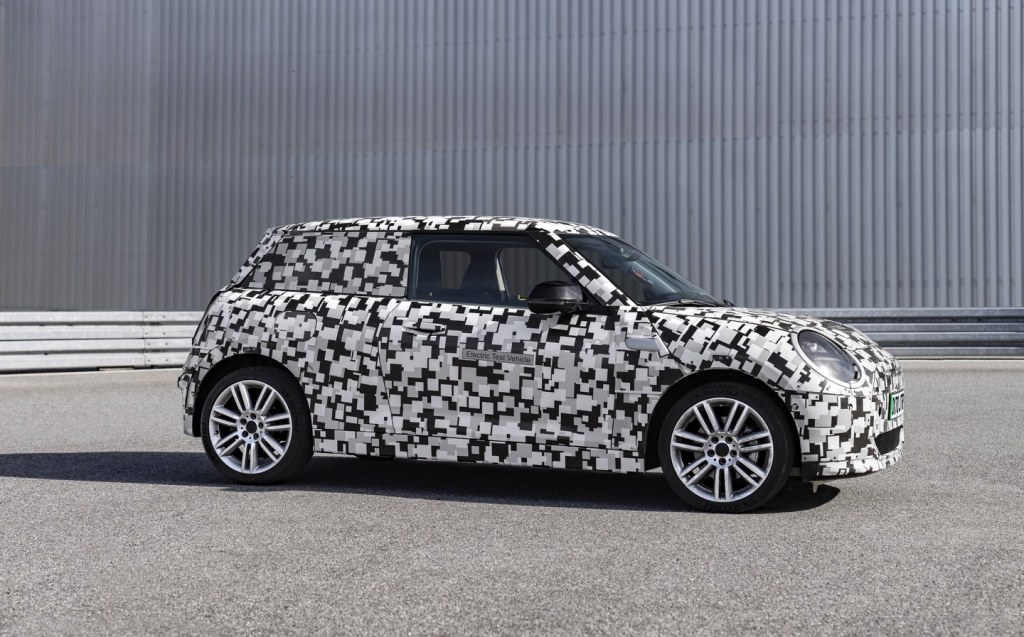
The front looks bluffer than before, but could be mistaken for a facelift of the existing car, while the rear end has been completely restyled.
In place of the Union Flag inspired rear lights (sometimes disparagingly referred to as “Brexit lights” due to the implied patriotism of UK owners) are sharper, more aggressive-looking lamps, joined by a full-width nameplate for the car.
The rear haunches are visually heavier than before, too, while the flush door handles appear to be identical to those used in the BMW 4 Series Gran Coupé.
Reinvented cabin, sticking with circular themes
A pared-back design for the new Mini’s dashboard defines the car’s cabin. Spy shots reveal that the small instrument cluster in front of the steering wheel has been replaced by a head-up display and there’s a large circular touchscreen in the middle of the dashboard. A new take on the retro-styled toggle switches is found below that.
It’s understood that there will be more than one electric version of the hatchback offered, with two different battery packs and power outputs, likely badged Mini Cooper E and Mini Cooper SE. A longer range than the current model’s 145 miles is very likely for both.

In time, it’s expected that the Mini Convertible will be a pure-electric vehicle, too. That was recently previewed by a limited-production electric version of the outgoing model.
Related articles
- After reading about the new Mini Countryman, you might be interested to read all about the Mini Aceman electric car concept
- Here are all the car makers’ electric car plans
- How does Mini’s first pure-electric car fit into everyday life? Read Will Dron’s reports on living with the Mini Electric
Latest articles
- Sci-fi inspired Ferrari 12Cilindri replaces 812 Superfast, powered by 819bhp unassisted V12 engine
- New Renault Symbioz adds to French carmaker’s fresh crossover SUV assault
- Red Bull confirms Adrian Newey’s departure, but where next for the F1 designer?
- Lotus shows off its work on British Cycling’s Paris Olympics bicycle
- New Aston Martin Vanquish to get V12 engine with 824bhp
- Cupra updates Leon and Formentor with sharp styling and longer-range hybrids
- Extended test: 2023 Vauxhall Astra Sports Tourer GS PHEV
- Omoda 5 prototype review: Bargain family SUV is solid first effort for new Chinese brand
- Dacia Duster 2024 review: Rugged, affordable SUV modernised with electrification and quite the glow up


